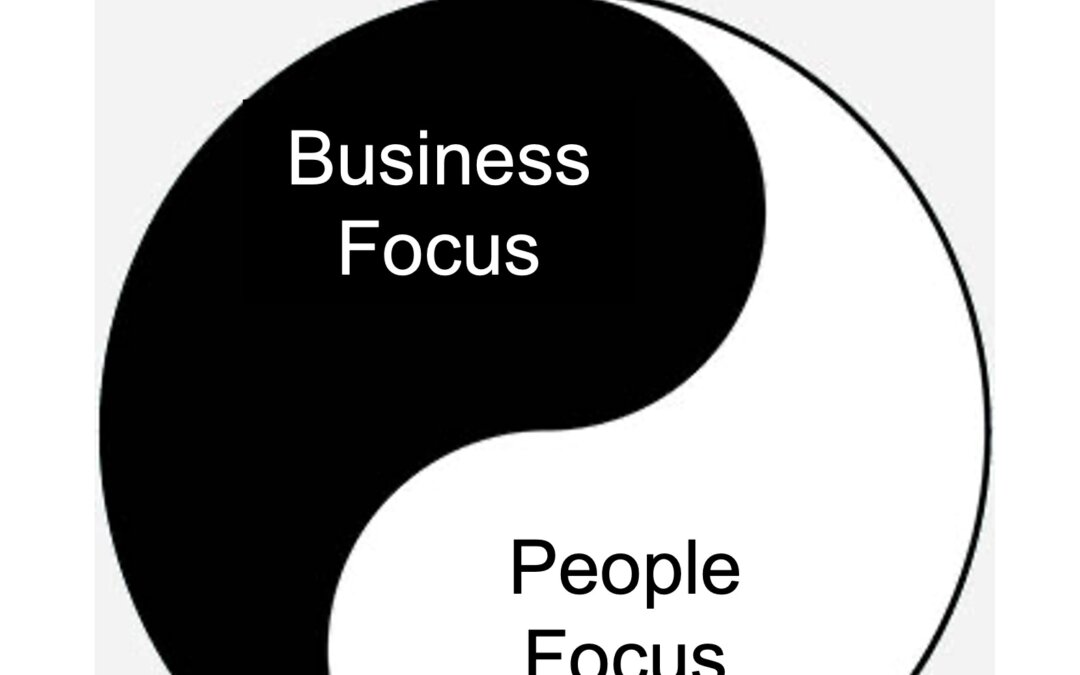If you review the literature on leadership, you will find there are two dominate conversations. The first centers on the leader’s role in ensuring the organization produces the outcomes that lead to success. Often centered on the theme of profit maximization.
The second counters this focus by asserting the leader’s role is to develop the culture whereby people can flourish and grow.
This bifurcation is often referred to as the hard side versus the soft side of business. Viewing these aspects of success as opposing forces puts leaders in the untenable position of having to choose between the two.
Being forced to choose, the leader will always choose the path they know will create the outcomes that ensures the organization’s success – the hard side. Put another way, if forced to choose they will, and I will argue must, choose profit over people.
How did we get into this either/or position?
It starts with the premise that the best way to achieve desired results is for the leader to define how work will get done and the roles needed to do the work. Then find the right people and put them in the right roles. In essence design the machine, plug in the right components, turn on the machine and out comes the results.
As we point out in our previous blog Developing People, no one will have the requisite skills when first put into a position. So, developing people is key to the success of the organization. The other side of the duality.
The issue is this isn’t a real choice, it’s a false dichotomy. The true nature of an organization is the two are integrated compliments, not dueling opposites.
The ability of an organization to achieve goals is determined by the ability of its people to execute. The ability of people to execute is determined by people’s ability to improve and grow.
If you step back and think about this, there is a certain beautiful symmetry in this. To achieve their goals, organizations need to develop their people; and to develop their people they need goals that will stretch and challenge them thus catalyzing growth. We call this the Virtuous Cycle of Growth.
Ask yourself, do you use people to achieve goals, or do you use goals as a vehicle to grow people? Either way you will achieve your goals
Yet, if it’s the former, you are simply looking for “parts” to fit into the machine that can accomplish predefined tasks.
If it’s the later, you are constantly growing people’s capacity to execute engaging the Virtuous Cycle of Growth.
Instead of a machine whose design is filled with experts performing relatively fixed functions making it relatively difficult to change, a living organization is an evolving body whose cells are continually growing and maturing, constantly adjusting to its environment maximizing its contribution to its customers.
In The Living Organization® Framework we view the leader’s role as guiding their organization on a journey. A journey that will build an organization’s capacity to make an ever-increasing positive outcome for those it serves. A journey where its people will have opportunities to grow and enhance their contribution to the success of the whole.
As a leader you no longer have to make a choice. Leading The Living Organization allows you to guide the journey of growing and maturing your organization, increasing its capacity to execute and hence its profit.
To begin any journey, it is important to know where you are, where you want to go and to have a Strategic Compass™ that will guide you along the way. This will be the topic of our next blog.

